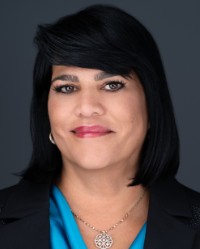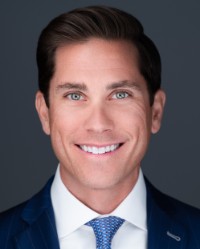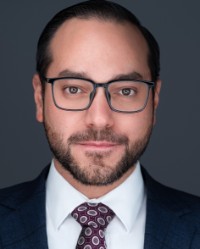Insurance Litigation 2025
USA – Florida
Trends and Developments
“I Can See Clearly Now” – Analysing Florida Insurers’ Good Faith Obligations in the Face of “Clear” Liability Post Tort Reform
Bad faith in the insurance context arises when a carrier fails to act with the same degree of care and diligence as a person of ordinary care and prudence would exercise in the management of their own business, when handling claims brought by a third party against an insured. For a third-party bad faith claim, a liability insurer’s bad faith exposure is triggered when:
- damages are likely to exceed policy limits; and
- the insured’s liability is “clear”.
Under such circumstances, the carrier is obligated to attempt to settle the matter within policy limits or to proffer policy limits to the claimant. But what is the definition of “clear”, and when does an insurer have to make the determination?
When does a determination need to be made?
The 2023 amendments to Section 624.155, Florida Statutes, state that a third-party bad faith action may not lie if the insurer tenders the lesser of policy limits or the amount demanded within 90 days of “receiving actual notice of a claim which is accompanied by sufficient evidence to support the amount of the claim”. This amendment was enacted in response to case law that required an insurer to initiate settlement in the absence of a demand in some cases. The question of whether or not payment of limits is required, once a demand is received, still turns on whether liability is “clear” when notice is received and the amount in question is above limits.
Prior to tort reforms enacted by Florida Legislature in 2023, the “when” could be as early as a few weeks after an insurer was notified of a potentially covered incident, even when no demand for limits (or otherwise) had been made. Rather, the insurer had an affirmative duty, upon receipt of the notice, to investigate possibilities of settlement and initiate settlement discussions. The 2023 amendments to section 624.155, Florida Statutes, sought to alleviate the potential for a bad faith set up. That statutory provision now states that a third-party bad faith action shall not lie if the insurer tenders the lesser of policy limits or the amount demanded within 90 days of “receiving actual notice of a claim which is accompanied by sufficient evidence to support the amount of the claim”.
The legislative reforms were intended to allow for a more meaningful analysis, by providing a “safe harbour” period of 90 days after an insurer received “actual notice of a claim that is accompanied by sufficient evidence to support the amount of the claim”. See Florida Statutes Section 624.155 (4)(a)(2023). During that 90-day period, no bad faith action, whether brought pursuant to Section 624.155 or under the common law, will lie for causes of actions filed after 24 March 2023.
Is it clear enough?
As to what constitutes “clear” liability, Florida courts had, on a case-by-case basis, held that clear liability meant something more than “possibly” being liable; and generally entailed circumstances where the insured’s responsibility for the loss was evident and uncontroverted, or so well established that a reasonable insurer, when viewing all the evidence know to the insurer at the time in question, would conclude that liability was inevitable if the case proceeded to trial. Think, for example, of an inebriated driver proceeding the wrong way on a highway and colliding into another vehicle, causing catastrophic injuries. In such a situation, most reasonable persons would understand that liability for the accident was “clear”. Further, in such a situation, the claimant’s injuries would likely exceed the policy limits, triggering the duty to proffer limits. Importantly, the existence of “clear” liability, as defined in Florida jurisprudence, stripped an insurer’s ability to delay or negotiate a settlement for something less than policy limits, if the damages were known to exceed or would likely exceed policy limits, as doing so would put the insurer’s financial interest ahead of the insurer’s obligation to act in the best interest of its insured.
A decision to watch
The Eleventh Circuit’s recent decision in Kinsale v Pride of St. Lucie Lodge 1189, Inc. introduces new language around what constitutes “clear” liability in the bad faith context. Whereas earlier Florida precedent focused on whether liability was evident based on facts known to the insurer at the time, Kinsale suggests that a jury may consider whether liability was a “likely possibility” based on information the insurer knew – or should have known – through further investigation. Thus, plaintiffs’ attorneys will likely rely on Kinsale to argue that carriers are obligated to act on information not actually provided during claim handling, potentially shifting how “clear” liability is argued in future cases. This retroactive approach has the effect of diluting the clear liability threshold set by Powell and invites jury speculation about an insurer’s mindset based on information acquired only after litigation began. As Judge Lagoa warned in her dissent, the Kinsale decision has imposed liability “based on information that was not and could not have been known to the insurer at the time”. Going forward, the trial bar will likely cite Kinsale in support of broader bad faith theories.
While the full effect of Kinsale remains to be seen, the decision is already drawing attention from practitioners and commentators because it gives plaintiffs’ attorneys new ground to argue that liability can be deemed “clear” even where factual disputes or defences exist. In practice, this means Kinsale may be cited in bad faith cases outside of the negligent security context, as claimants attempt to broaden its logic to automobile, premises and products liability claims. At a minimum, the opinion underscores the importance of insurers carefully documenting their investigative efforts during the safe harbour period and beyond, so that the record reflects both what was known and what steps were taken to obtain additional information. By doing so, carriers can place themselves in the best possible position to rebut arguments that they “should have known” more than they actually did at the time.
At the same time, Kinsale highlights an unresolved tension in Florida bad faith law: how far an insurer’s obligations extend when liability is not obvious, but instead depends on developing facts, intervening actors or contested legal theories. By framing “clear liability” in terms of what the insurer might have uncovered with additional investigation, the decision blurs the line between hindsight and contemporaneous judgment. That uncertainty is why plaintiffs’ attorneys are likely to test Kinsale’s reasoning in a variety of contexts, particularly those involving complex causation questions.
Expanding consequences
Another potential consequence of Kinsale is that the plaintiffs’ Bar will cite the case to expand the “foreseeable zone of risk” in negligent security cases beyond what presently exists under Florida law. Before Kinsale, a property owner’s duty to guard against third-party criminal acts arose only when the risk was known or reasonably foreseeable – see, eg, McCain v Florida Power Corp., 593 So. 2d 500, 503 (Fla. 1992). Kinsale muddies the risks insurers and their policyholders must manage by introducing a retrospective “should have known” standard. This has the potential to invite litigation over whether every missed fact or unpursued lead could transform a case into “clear” liability in retrospect.
But the Eleventh Circuit’s holding in Kinsale conflicts with Florida case law. For example, in Brownlee v 22nd Avenue Apartments, LLC, 389 So. 3d 695, 699 (Fla. 3d DCA 2024), the court rejected liability for a shooting in an adjacent alley, holding the owner neither created the hazard nor had notice of it. Brownlee affirmed that foreseeability must be judged based on facts known beforehand – not in hindsight. Kinsale’s departure from that principle by delving into what the carrier “should have known” invites plaintiffs’ attorneys to encourage juries to impose bad faith without actual knowledge of clear liability, and could expand exposure for insurers and premises liability defendants alike.
Kinsale also conflicts with Demelus v King Motor Co. of Fort Lauderdale, 24 So. 3d 759, 762 (Fla. 4th DCA 2009), where the court declined to impose liability on a dealership whose locked vehicle was stolen and crashed. The court held no duty existed because the defendant had not created a foreseeable zone of risk and rejected expert testimony about additional security. Foreseeability alone, it emphasised, is not enough – liability cannot rest on hindsight or speculation. Plaintiffs’ attorneys will likely rely on Kinsale to invite juries to infer bad faith from the absence of clairvoyance.
The Florida Supreme Court has long cautioned against evaluating insurer conduct with hindsight. In Harvey v GEICO General Insurance Co., 259 So. 3d 1, 7 (Fla. 2018) the Florida Supreme Court reiterated that “[t]he question of whether an insurer acted in bad faith… must be determined under the ‘totality of the circumstances’”, but emphasised that this inquiry must be based on facts actually known to the insurer during claim handling, not those discovered later in litigation. Kinsale’s approach – shifting attention to information uncovered only after litigation began – complicates that framework. Going forward, plaintiffs may seize on Kinsale to argue for broader duties in both negligent security and bad faith cases, while insurers will need to consider how this evolving standard could shape claims investigations in factually complex cases.
Insurers should consider proffering policy limits in situations in which liability is not just a “given” but in which liability may be likely foreseeable. This means that adjusters, who are trained to rely on formulas, actuarial tools and documentation to estimate the “value” of a claim, must be extra-vigilant not to undervalue the total exposure, particularly in cases involving pain and suffering, mental anguish or permanent injury. These subjective damages must be closely analysed through evaluation of prior judgments and verdicts in similar cases. Further, the inquiry into what constitutes “clear liability” cannot be stagnant. Rather, facts must be reassessed consistently, and the need to proffer readdressed, as the claims investigation continues.
One step forward, two steps back
Kinsale’s broadening of bad faith exposure comes against the backdrop of the Legislature’s 2023 reforms, which were designed to curb gamesmanship and provide greater predictability. In fact, the in 2023 tort reforms where specifically designed to curb the misuse of bad faith claims as a litigation strategy. The statutes introduced meaningful guardrails such as reciprocal good faith obligations, a 90-day safe harbour period and a clarification that bad faith cannot arise from mere negligence. The real-world consequences of bad faith litigation abuse – precisely what the 2023 reforms aimed to address – are well-documented. A 2024 report by the Insurance Information Institute noted that although Florida accounts for just 8% of national insurance claims, it generated over 75% of all insurance-related litigation in the years preceding the reform. Nine insurers became insolvent over a two-year period, and Citizens Property Insurance Corporation’s policy count more than doubled between 2018 and 2022. During that time, the average Florida homeowner’s premium climbed to USD4,231 – nearly triple the national average.
The reforms enacted in H.B. 837 and S.B. 2A were intended to reverse these trends. Early results suggest they are working: Florida’s defence and cost containment expense (DCCE) ratio – a key indicator of litigation burden – declined from 8.4% to 3.1% following passage of the reforms. See Section 624.155(4)(a), Florida Statutes (2023). These outcomes underscore the Legislature’s intent to impose balance and predictability in the claims process.
Florida’s bad faith framework has always walked a fine line between holding insurers accountable for unreasonable claims handling and avoiding hindsight-driven liability that distorts the claims process. The Legislature’s 2023 reforms were a deliberate recalibration – creating a defined safe harbour, clarifying reciprocal good faith duties and aiming to reduce gamesmanship. Kinsale, however, points in a different direction. By allowing liability to be framed around what an insurer “should have known”, it departs from the traditional focus under Florida law on the facts known to the insurer at the time. While the majority’s opinion leaves many questions unanswered, it may encourage plaintiffs to argue that insurers must go further and act faster than before – even in the absence of a demand.
How far Kinsale will reach remains to be seen. The opinion has already drawn attention because it may invite greater jury scrutiny of insurers’ investigative decisions, and plaintiffs’ counsel are likely to cite it in support of expanded theories of bad faith. At the same time, Florida precedent has long cautioned against hindsight-based liability, and courts will have to reconcile Kinsale with those principles.
That tension – between Kinsale’s hindsight-inflected standard and Florida’s long-standing guardrails – will likely frame the next wave of litigation. It can be expected that plaintiffs will test the decision aggressively, citing it in contexts far removed from the facts of the case, while insurers will seek to cabin its reach by pointing to earlier authority such as Powell, Harvey and Farinas. Florida’s appellate court’s will ultimately be called upon to clarify whether Kinsale represents a true doctrinal shift or a fact-specific, federal outlier. Until then, the case sits at the intersection of evolving statutory reform and common-law precedent, raising as many questions as it answers.
In short, Kinsale adds a new wrinkle to Florida’s already complex bad faith landscape. For now, insurers should treat it as a decision to watch closely: one that may be tested in future cases, but whose long-term impact will depend on how Florida courts interpret and apply it in practice.
Looking ahead
The Kinsale decision underscores the unsettled and evolving nature of Florida’s bad faith jurisdprudence. By shifting attention towards what an insurer “should have known”, the opinion introduces uncertainty into an area that legislative reform sought to stabilise. While plaintiffs’ attorneys will likely seize on Kinsale to broaden bad faith theories, Florida courts still have a deep body of precedent emphasising that liability must be judged based on facts actually known during the claim investigation, not with the benefit of hindsight.
For insurers, the key takeaway is vigilance. Claims investigations should be thorough, well-documented and continuously reassessed as new information emerges. At the same time, carriers should not assume Kinsale has rewritten the rules across the board. Its ultimate impact will depend on whether Florida courts adopt its reasoning or distinguish it as an outlier.
In the end, Kinsale adds another wrinkle to an already complex area of law. As Florida courts continue to reconcile recent statutory reforms with longstanding common-law principles, insurers and their counsel should follow these developments closely. The balance between fair claim resolution and hindsight-driven liability remains delicate, and how courts strike that balance in the wake of Kinsale will shape the state’s insurance market for years to come.
Colodny Fass
1401 NW 136th Avenue
Suite 200
Sunrise
FL 33323
USA
+1 954 492 4010
+1 954 492 1144
mabate@colodnyfass.com www.colodnyfass.com



